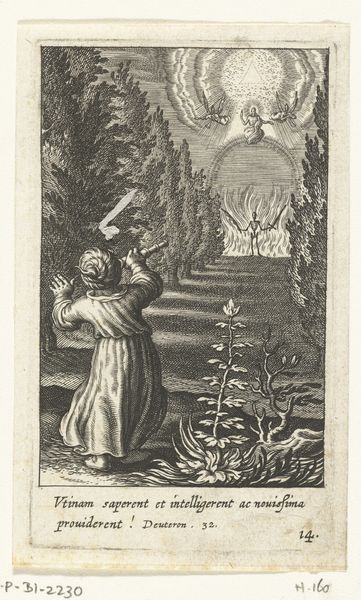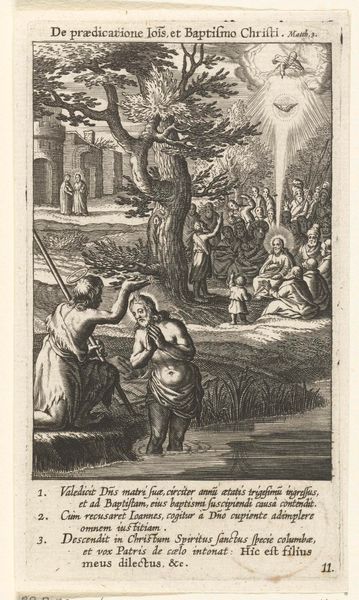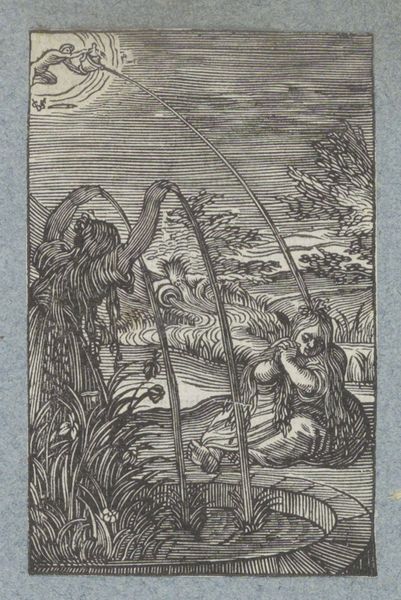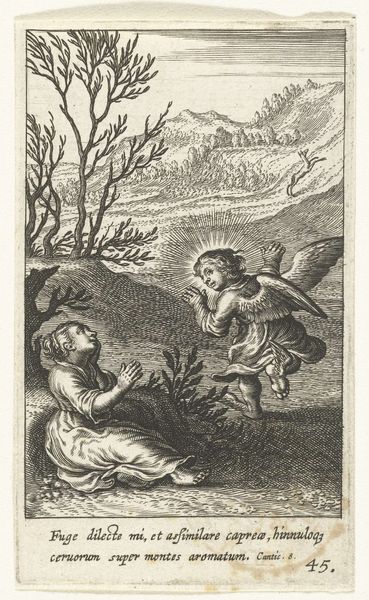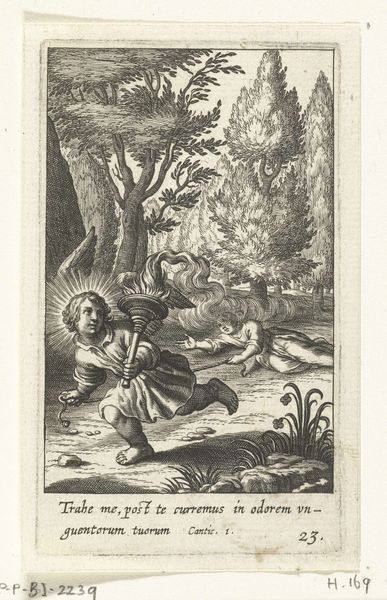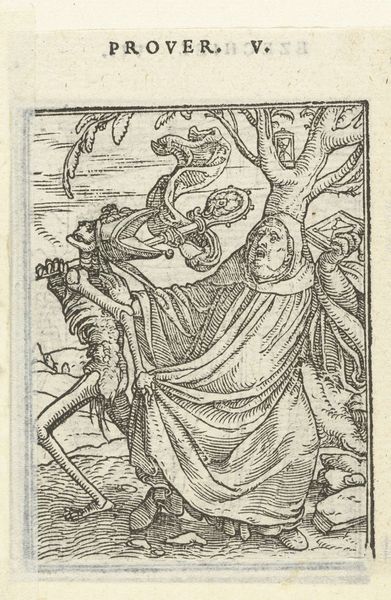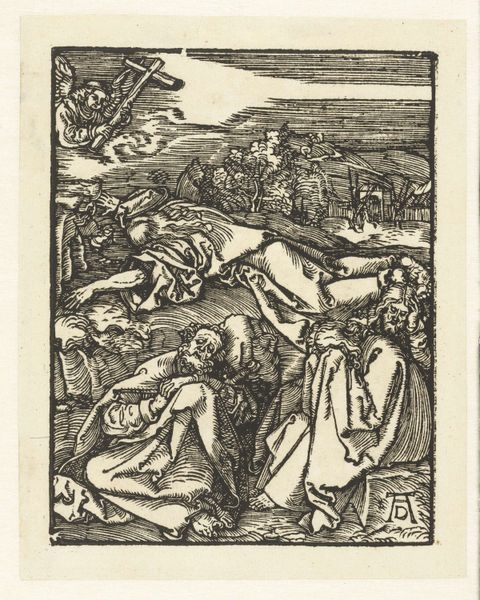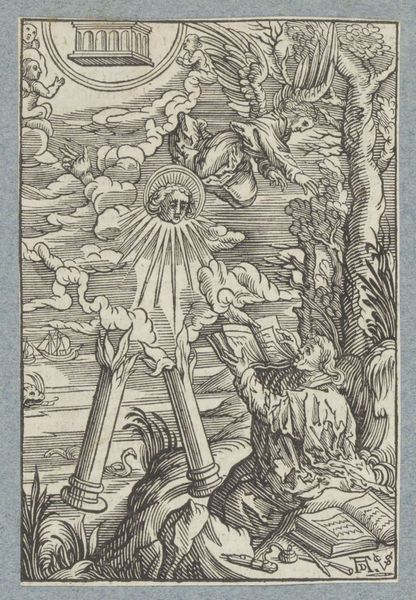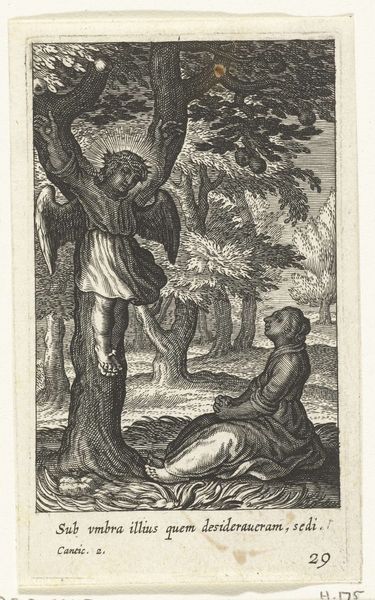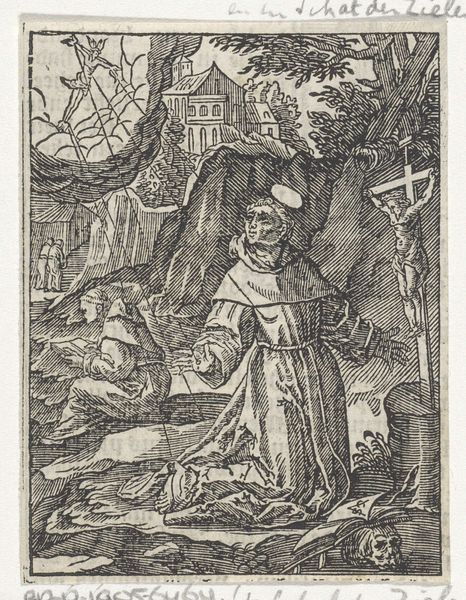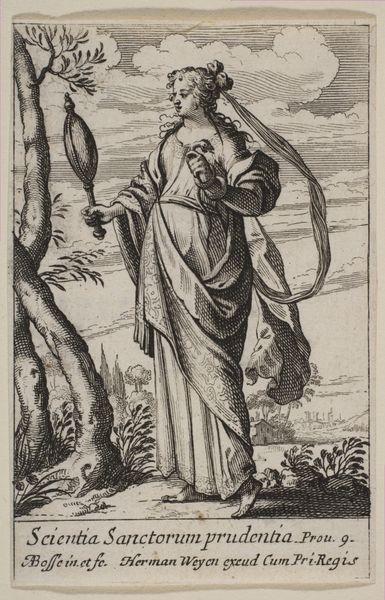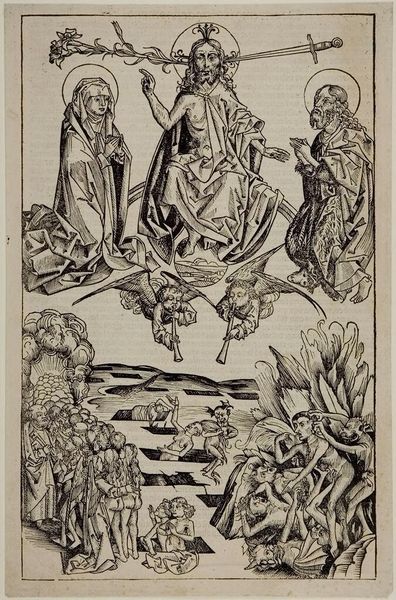
print, etching, engraving
#
narrative-art
#
baroque
# print
#
pen illustration
#
etching
#
old engraving style
#
landscape
#
figuration
#
history-painting
#
engraving
Dimensions: height 95 mm, width 56 mm
Copyright: Rijks Museum: Open Domain
Editor: So, here we have “Huilend kind zit bij fontein,” or “Crying child sits by the fountain,” an etching by Boëtius Adamsz. Bolswert from between 1590 and 1624, housed at the Rijksmuseum. The texture created by the engraving feels really intense; you can almost feel the grief radiating off the child. What can you tell me about the context around pieces like this? Curator: Consider the material realities behind this etching. The artist relies on manual skill using specific tools to produce lines on a metal plate, a process involving physical labor and technical know-how. This links "high art" with skilled craftsmanship. How might the materials—the copperplate, the etching tools, the ink—and their availability have influenced Bolswert's work, and perhaps its accessibility to a wider audience? Editor: So you’re saying thinking about the production side is crucial here. Were prints like this common at the time? Curator: Exactly! These weren't unique paintings destined for a wealthy patron’s wall. Prints had the potential to circulate more widely. Etchings also require a printing press; an entire workshop infrastructure. Notice how the lines create contrast? Editor: The lines are so controlled yet the scene has such a raw emotion, it is intriguing. The cost must have been quite lower than an oil painting, right? Curator: Precisely. So who would consume such an image? What purpose did it serve to reproduce and disseminate it? By analyzing the context in which this work was made and circulated, can reveal so much about both artistic expression and material production, beyond any idealised reading we can take of it. Editor: I see. It's less about the artist's emotions and more about the mechanics and socioeconomic impact. It adds a whole other dimension to it. Curator: Indeed! Appreciating the process is an invitation to question the role and purpose of art, challenging the conventional boundaries between artistic expression and daily life. Editor: Thanks, that was really eye-opening! I hadn't considered approaching art from such a material perspective.
Comments
No comments
Be the first to comment and join the conversation on the ultimate creative platform.
